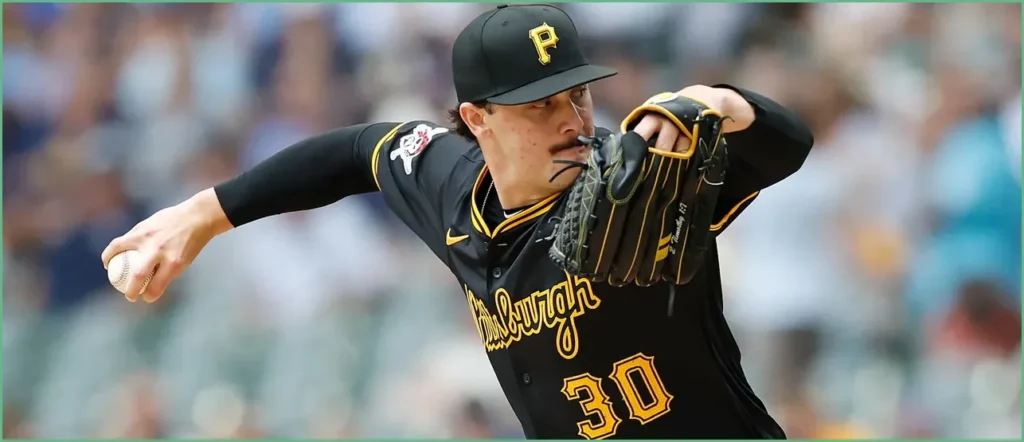Paul Skenes in pinstripes? … I’m game. This piece looks at why the Pirates’ young ace might want out, how dominant he’s been on the mound, and what a potential move to the Yankees would mean for all sides. It lays out the teammate-sourced report that Skenes has been openly hoping for a trade and the practical hurdles that make that wish complicated.
Skenes exploded onto the scene as the 2024 Rookie of the Year and followed it with another elite season in 2025. He posted a 1.97 ERA with 216 strikeouts, a 2.36 FIP across 187 innings, and walked only 42 batters while allowing 136 hits. Those numbers put him squarely in NL Cy Young conversation and mark him as the single most valuable pitcher on the market in terms of upside and control.
Despite those gaudy results, the team around him has not kept pace. The Pirates finished 71-91, 20 games under .500 and last in the NL Central, and Skenes’ personal record sat at 10-10 thanks largely to a weak offense and shaky supporting pitching. Under club control through 2029, he’s locked in for years unless Pittsburgh chooses to move him, which raises a straightforward question about whether the franchise will ever commit the resources to contend while his prime years tick by.
A report circulating from regional coverage says Skenes has told teammates he wants out and that he hopes for a trade well before free agency. “According to a Pirates teammate who recently spoke with NJ Advance Media,” reads the article. “Skenes has ‘no confidence the Pirates ever are going to win’ with him in Pittsburgh, and he’s ‘hoping for a trade’ well before he can become a free agent after the 2029 season.”
“‘Trust me, he wants to play for the Yankees,’ the Skenes teammate said. ‘I’ve heard him say it multiple times.’”
From a competitive angle, the Yankees make sense: they are a big-market club with a perennial win-now window and the payroll appetite to absorb premium talent. For Skenes, moving to New York would mean pitching behind a more potent lineup and in front of larger crowds and national attention, which matters for legacy and endorsement opportunities. For the Pirates, trading him would be a brutal choice between keeping a generational arm to build around or cashing him in for a haul of prospects to accelerate a rebuild.
Front offices weigh those choices differently, and Pittsburgh’s decision calculus will include contract control, trade return, fan reaction, and long-term vision. General managers seldom trade cornerstones early in arbitration-controlled years unless the return is transformative, and teams with limited payroll flexibility often drag their feet on full rebuilding gambits. That reality makes an early Skenes trade less likely unless a lid is blown off the market by a rival willing to overpay for immediate impact.
There’s also the human side: players want to win while they can, and being stuck on a losing roster while performing at an elite level breeds frustration. Skenes’ reported comments echo a common theme in sports where top talents seek competitive spots rather than staying loyal to teams that can’t match their ambitions. That tension can accelerate trades, but it also fuels clubhouse noise that clubs prefer to manage quietly.
From the Yankees’ perspective, adding an ace under club control would be a slam-dunk upgrade to a rotation that occasionally struggles to find consistency in postseason play. It would also force hard roster and prospect decisions, as acquiring a top-tier arm typically costs multiple blue-chip prospects and eats into future development pipelines. The Yankees have shown historically they will spend for advantage, but whether they will surrender the specific assets Pittsburgh would demand is an open question.
Expect the rumor mill to churn as scouts, GMs, and front-office types assess timelines and costs, especially during the winter meetings and ahead of next season’s arbitration and free agency churn. Pittsburgh can sit tight and try to build complementary pieces around Skenes, or they can listen if an offer comes that reshapes the franchise’s future. Either way, the conversation marks a critical crossroads for a young ace and a small-market club navigating high-stakes choices.
